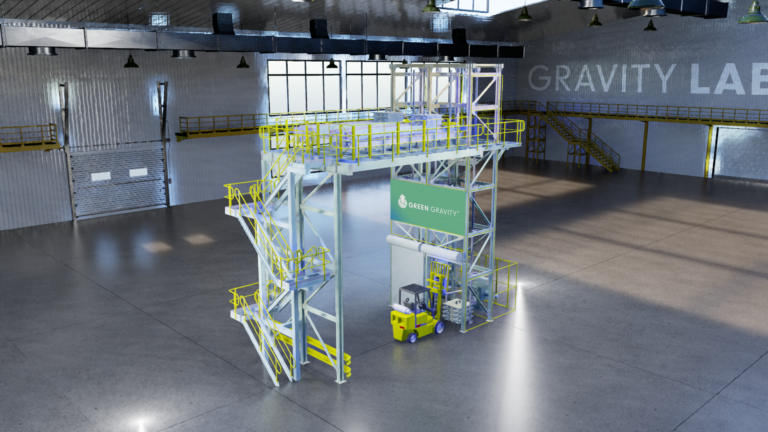Green Gravity said its new R&D facility will also be co-commissioned with a digital twin. A digital twin is a virtual representation of a physically commissioned system, and can be used to test new components or hypothesis before they are trialed in the physical world.
The startup, led by former BHP executive Mark Swinnerton, says that the introduction of digital assets into Gravity Lab will quickly enable data to validate its commercial-scale energy storage systems. It is partnering with Bluescope and AI specialist xAmplify to build the Gravity Lab, and it has secured support from NVIDIA.
Green Gravity's tech involves the lifting and releasing of heavy weights in legacy mine shafts. The concept is similar to other gravity energy storage technologies, but Swinnerton said that the use of old mine shafts, rather than purpose-built tall towers, will be a competitive advantage. This is because redeploying abandoned but abundant infrastructure lowers costs and is better for the environment.
“By re-using mining assets, costs can be kept low,” Swinnterton said. “By using gravity as the fuel, we dispense with consuming the critical water, land, and chemicals which other storage technologies rely on.”
He claimed that Green Gravity will be able to attach capacity at similar unit costs to pumped hydro, but for substantially less capital outlay.
Popular content
“So you don’t have to pay AUD 700 million ($468 million) like you do in some of the big pumped schemes,” Swinnerton previously told pv magazine Australia. “You just say, ‘well, we’ll pay AUD 30 million’. You’ll get less energy, but you’ll get a similar unit cost outcome to the pumped hydro and there’s lots of them.”
In November 2022, Green Gravity and GHD Group signed a memorandum of understanding to develop new applications for the startup’s storage solutions. It also completed domestic capital raises in 2022, but has its sights set on raising substantially more global capital.
Green Gravity claims it has uncovered at least 3 GWh of potential storage capacity from the 175 sites it has assessed and found to be suitable.
“There is more than that available – and that’s just in Australia,” said Swinnterton.
This content is protected by copyright and may not be reused. If you want to cooperate with us and would like to reuse some of our content, please contact: editors@pv-magazine.com.



By submitting this form you agree to pv magazine using your data for the purposes of publishing your comment.
Your personal data will only be disclosed or otherwise transmitted to third parties for the purposes of spam filtering or if this is necessary for technical maintenance of the website. Any other transfer to third parties will not take place unless this is justified on the basis of applicable data protection regulations or if pv magazine is legally obliged to do so.
You may revoke this consent at any time with effect for the future, in which case your personal data will be deleted immediately. Otherwise, your data will be deleted if pv magazine has processed your request or the purpose of data storage is fulfilled.
Further information on data privacy can be found in our Data Protection Policy.